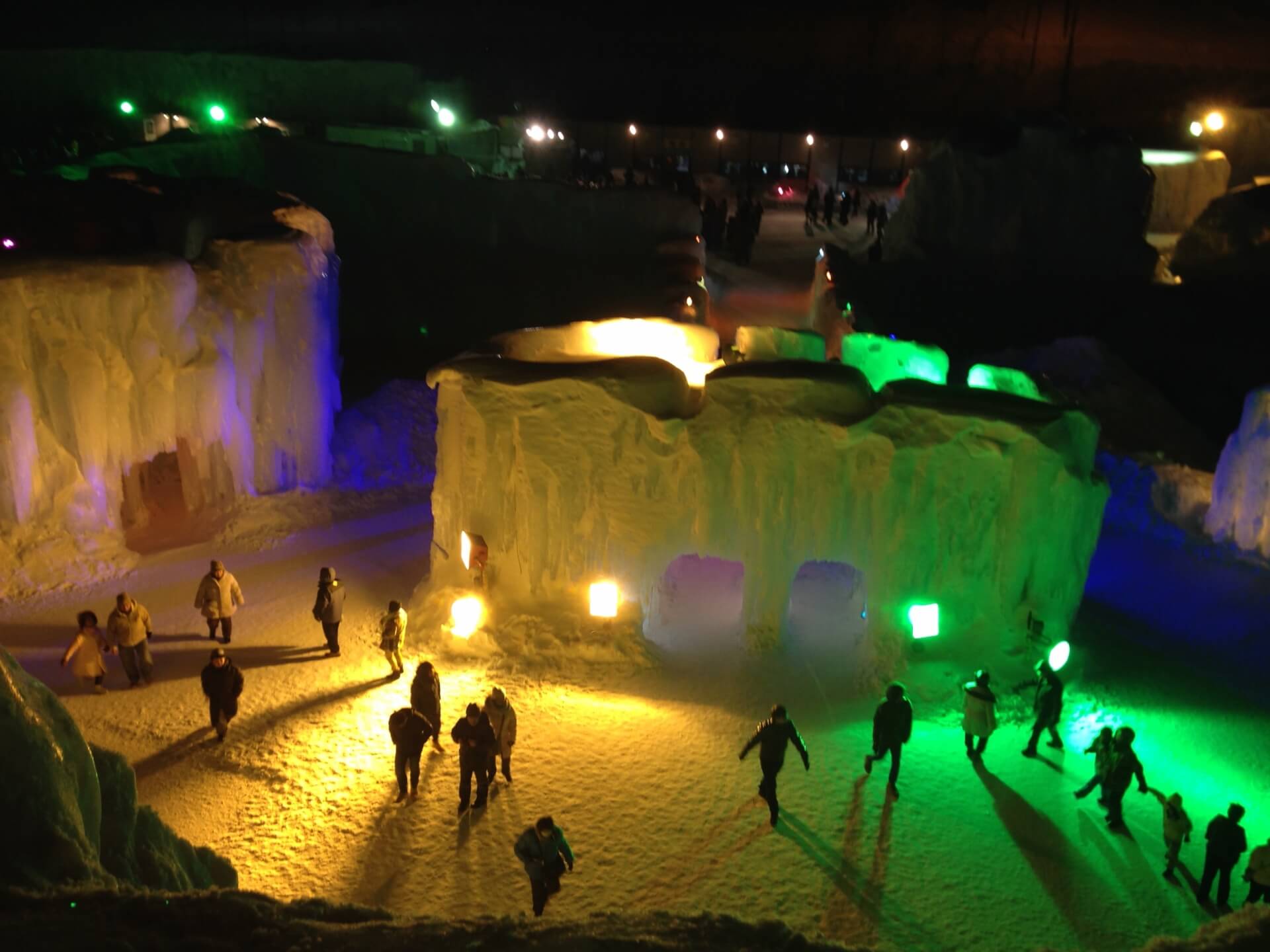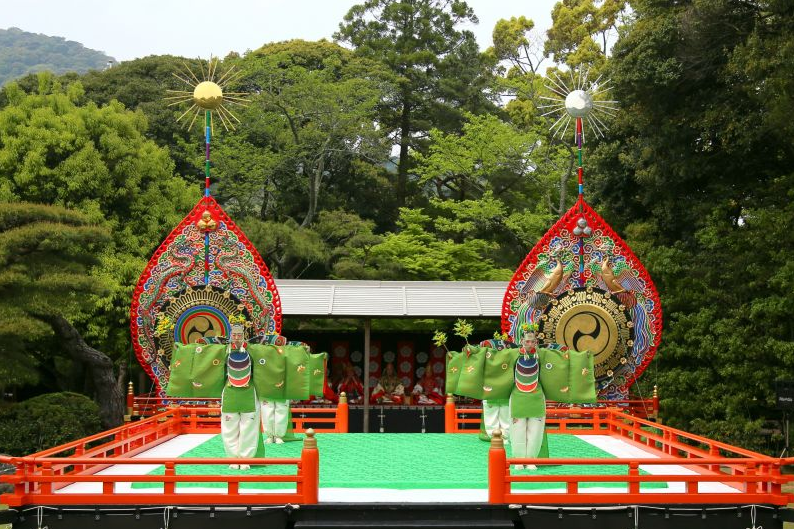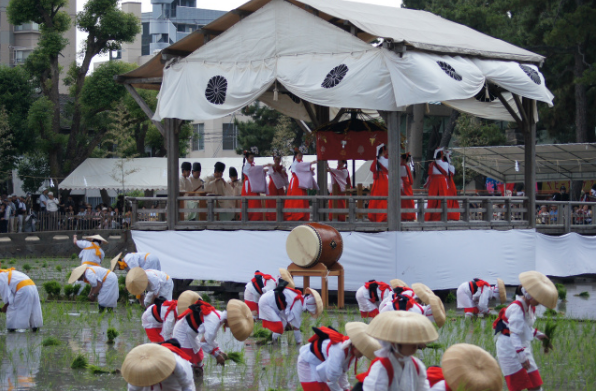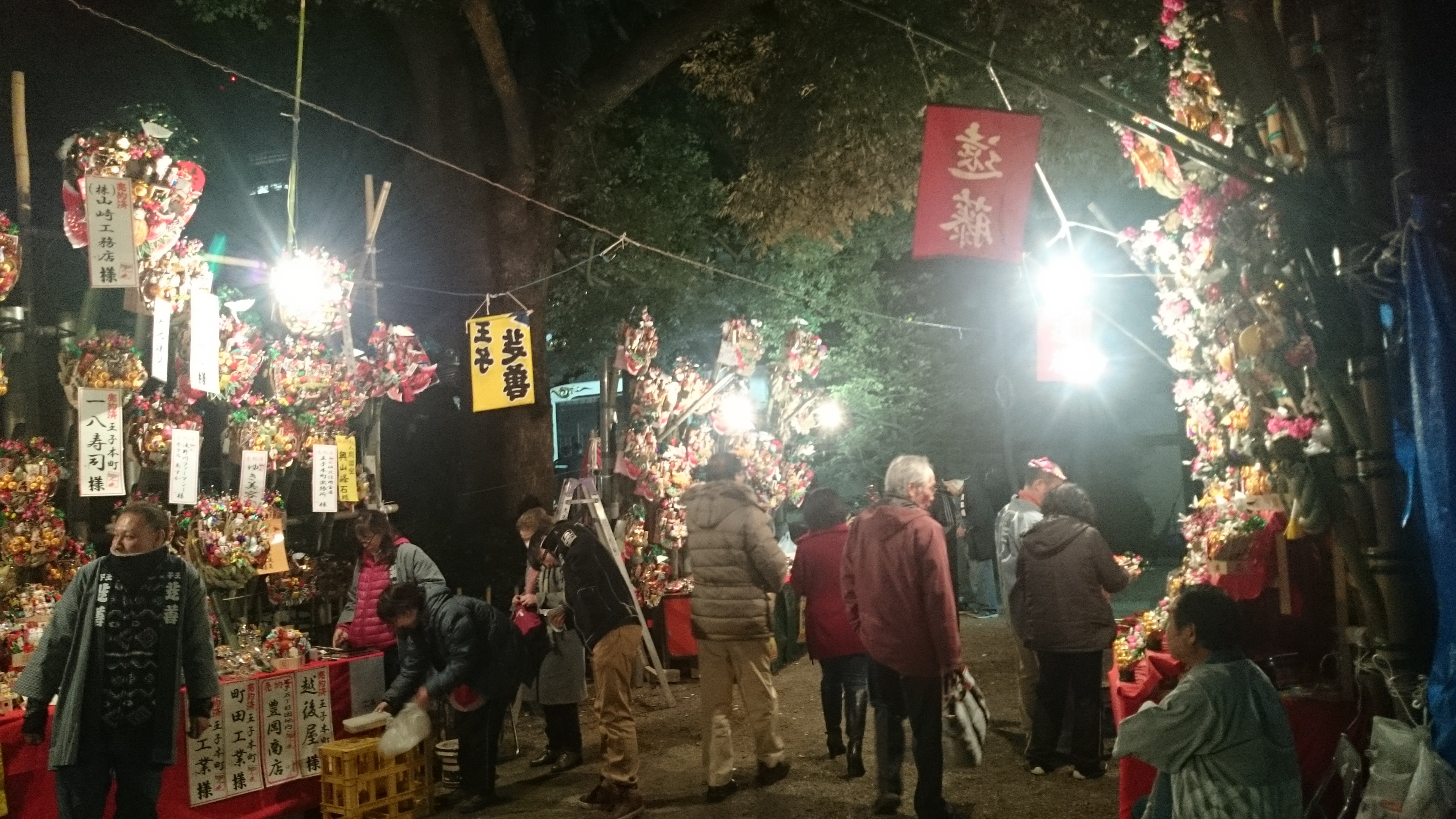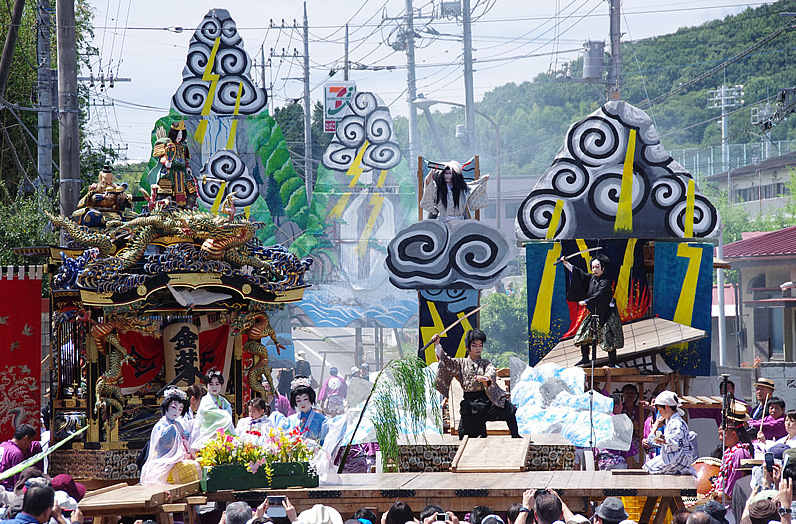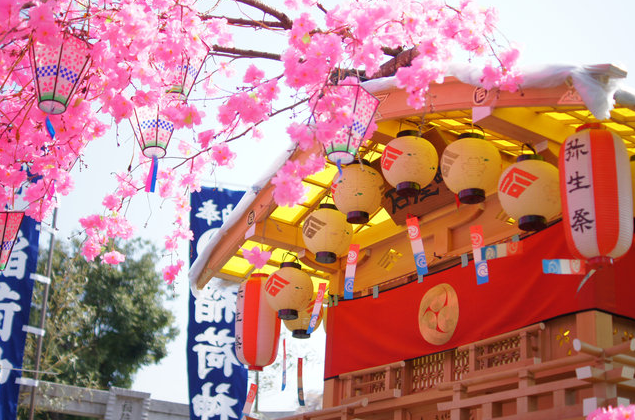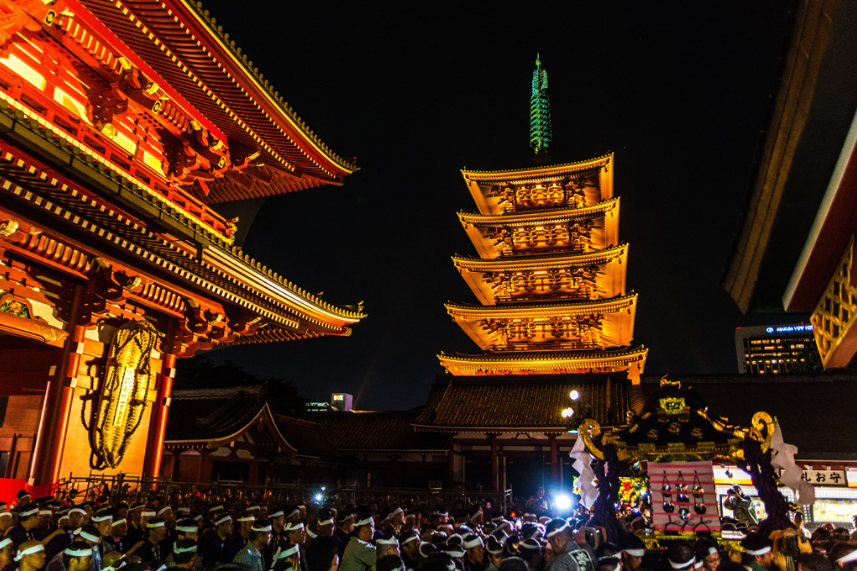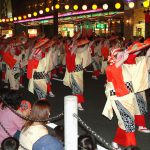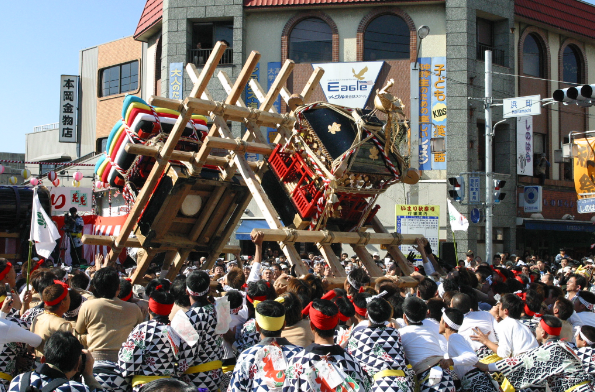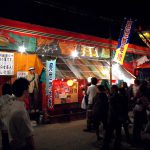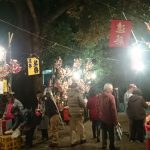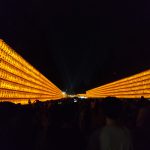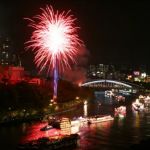Location: Atago Yasaka Shrine and its surrounding areas, Kumagaya Sports and Culture Park, downtown Kumagaya, 2-chome Miyacho, Kumagaya City, Saitama Prefecture
Dates: Every year from July 20th to 22nd (including festival ceremonies, from July 19th to 23rd)
Access: [By train] About 1 hour from Shinjuku Station to Kumagaya Station; about 4 hours from Shin-Osaka Station to Kumagaya Station by Shinkansen
[By car] About 20 minutes from Matsuyama IC on the Kan-Etsu Expressway; about 40 minutes from Hanyu IC on the Tohoku Expressway. Note: Traffic restrictions will be in place around the nearest stations on the day of the festival. Use of cars is not recommended. A free shuttle bus service to and from Kumagaya Sports and Culture Park will be available.
http://uchiwamatsuri.com/ (Kumagaya Uchiwa Festival Official Website)
Festival Overview
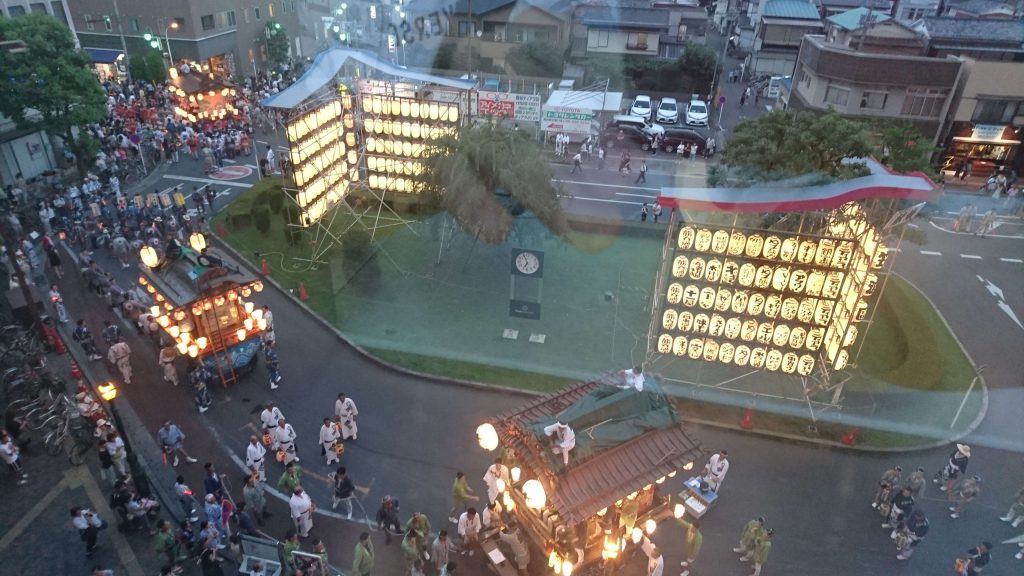
This festival, held annually from July 19th to 23rd, is one of the largest Gion festivals in the Kanto region.
It is a major festival in Saitama Prefecture, attracting a total of 700,000 participants.
Most of the events open to the public are concentrated between July 20th and 22nd, so if you just want to enjoy the festival atmosphere, it’s best to visit on any of these three days.
Traditional Japanese festivals often reflect the long-standing history of local shrines.
The history of this shrine is quite old; it appears in records dating back to the late 16th century, and the festival itself can be traced in documents from the late 18th century.
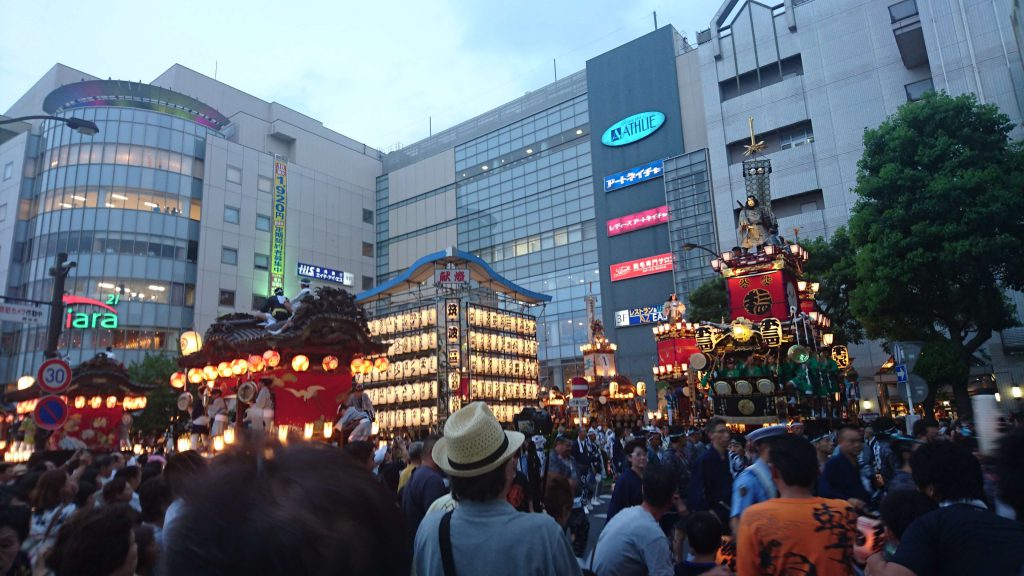
The origin of this festival dates back to a custom where, during the festival, each household in the town would cook red rice (sekihan) to pray for protection against epidemics and would then offer it to others.
Later, around the Meiji period, the owner of a certain shop was inspired by the sight of fans (uchiwa) being passed around during the “Tenno Festival” at Kanda Myojin Shrine. He decided to offer fans instead of red rice to his customers, which became very popular. This practice, combined with the shrine’s festival rites, is said to have given birth to the current festival.
Note: There were once three festivals called “Tenno Festival” at Kanda Myojin Shrine. However, one has merged with the Kanda Festival, one is held every four years, and one is no longer conducted, making it difficult for the public to witness these festivals in their original form today.
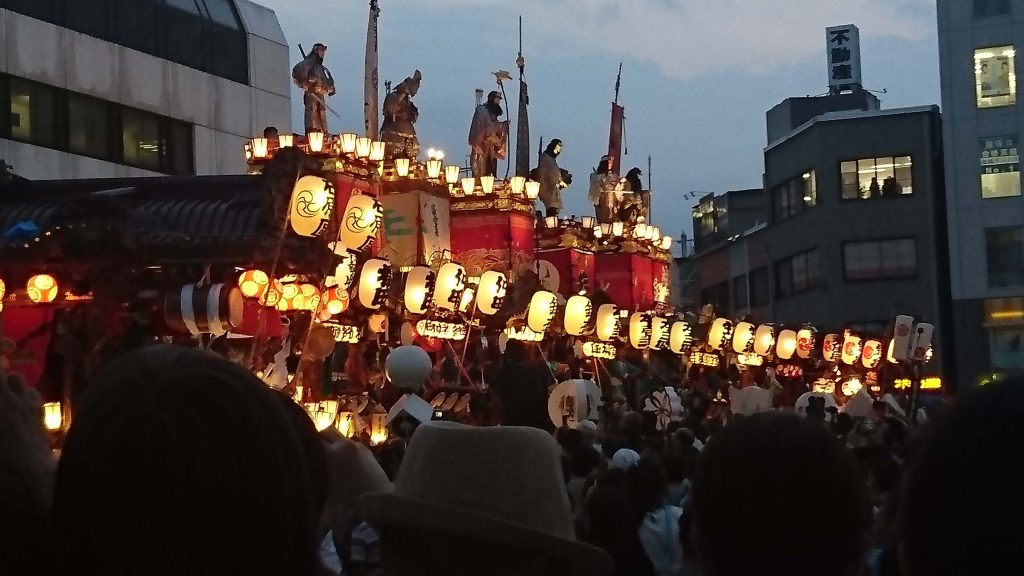
The highlight of this festival is undoubtedly the “Tataki-ai,” where various musical instruments are played together as the festival floats (yatai) gather. Among these, the “Hiki-awase Tataki-ai,” where all twelve floats are arranged in a fan shape and played in unison, is truly a sight to behold.
During the Tataki-ai on the 20th, about half of the floats participate, and even then, the tremendous sound created is overwhelming. When more than twice as many floats gather for the Tataki-ai, the spectacle and the intensity are absolutely incredible.
With the orange lanterns, the loud noises, and the festival men dressed in yukata, there is no other place that allows you to feel the beginning of summer so viscerally. It was a festival that could be confidently described as such.
Why not come and experience the arrival of summer with a drink in hand?
Festival Report

On July 20, 2016, I attended this festival and will share my experience.
Highlights:
I arrived at the north exit of JR Kumagaya Station around 6:30 PM, and as soon as I got off the train, I saw lanterns and felt the festival atmosphere. The first “Tataki-ai” was scheduled to take place at 7 PM in front of the north exit.
The floats (yatai) depart from the shrine, pass by the Animate store on the way to the east exit rotary, and circle around.
They then reconvene at the north exit, where the festival is enlivened by the sounds of drums and gongs.
Traffic Restriction Information:
- July 20: 6:30 PM – 8:00 PM (Around JR Kumagaya Station East and North Exits)
- July 21: 1:00 PM – 9:00 PM (Around Route 17 and Festival Plaza)
- July 22: 1:00 PM – 10:00 PM (Around Route 17 and Festival Plaza)
Parking Information:
The Kumagaya City Hall parking lot is open until 11 PM, but it tends to get very crowded.
It is recommended to use the following paid parking lots: http://find-travel.jp/article/27459.
Stall Information:
On the 20th, only about a dozen stalls were open. Due to limited traffic restrictions, there were fewer stalls, but on the 21st and 22nd, stalls lined up along Route 17. Those looking to visit the stalls should go after the 21st.
The street on the north side is lined with izakayas (Japanese pubs). There are also pop-up stalls, so if you are looking for alcohol, you might want to check them out.
Hot grilled squid from the stalls and cold beer from the izakayas—an unbeatable combination!
Rest Area and Toilet Information:
Festival-goers are advised to use the restrooms at the station. Despite being in front of the station, there are only a few open restrooms.
To avoid inconveniencing the shops, please act responsibly. There is a facility called “Kumagaya-kan” near the Oak parking lot on the north side of Kumagaya Station, and it offers restrooms and a rest area. Checking out the facilities near paid parking lots is a good idea.
Details on toilet availability on the day:
- LAWSON, Save On: No restrooms available.
- FamilyMart: Restroom usage suspended during the festival.
- McDonald’s: Restroom available only with a purchase.
- Matsuya: Restroom usage suspended.



